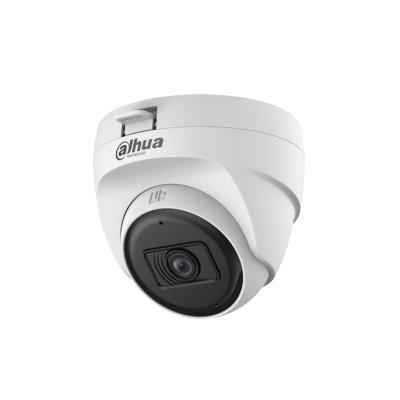Technology & Trends - Telemetry receivers
End users can add security, safety and business intelligence – while achieving a higher return on investment at their protected facilities – with live streaming video. It can be deployed effectively for IP video, network video recorders (NVRs) and body-worn cameras. The growing use of streaming video is resulting in vast technological developments and high-end software that promotes reduced bandwidth, high scalability and lower total cost of ownership (TCO). Here’s how users c...
Everybody has been hooked on the discussions about Analogue HD or IP systems, but shouldn’t we really be thinking about WiFi and 5G connectivity, removing the need for expensive cabling? Are wireless networks secure enough? What is the potential range? Even the basic question about whether or not the network is capable of transferring the huge (and growing) amount of data required for High Res Video, which will soon be quadrupled with the advent of 4K and higher resolutions. The future o...
Today, almost every employee carries with them a smart device that can send messages, capture, and record images and increasingly live-stream video and audio, all appended with accurate location and time stamping data. Provide a way for staff to easily feed data from these devices directly to the control room to report an incident and you have created a new and extremely powerful ‘sensor’, capable of providing accurate, verified, real-time multi-media incident information. You need...
The security market in 2016 saw an uptick in the economy, the introduction of new technologies, increased compliance requirements in key verticals, and rising concerns over the need for greater security. Users interested in upgrading or deploying new systems consistently chose networked system platforms. This trend further drove the demand for adaptive transmission solutions as a means of repurposing existing analogue infrastructure to accommodate IP devices on a networked platform. As this mi...
Layering as applied to computers is a made up term having no relationship to any particular standards When it comes to setting the criteria for network switching, we often hear “I only want a layer 3 switch.” We naturally assume that since the number 3 is bigger than the number 2, a layer 3 switch must be better than a layer 2 switch. It may surprise you, but when it comes to video security applications, this may not be the case. In fact, just the opposite may...
Too often a valid assumption turns out to be the opposite in practical operation It’s easy to misinterpret product specifications of IP video transmission products to the detriment of system functionality. We have seen how this problem relates to port speed, power over Ethernet (PoE) and transmission media. Now let’s look at some additional aspects of product specifications – and how they can be misinterpreted. Importance Of Temperature Rating What about te...
Since last year there has been a lot of talk with regard IP security cameras with 4K resolution. As with any advancement in video security, this too has come about due to advances in consumer electronics. While being the “latest and greatest,” it still raises questions as to actual, practical everyday usage. What Is 4K Resolution? Let’s start by defining 4K. Back in the day we had HDTV, which in some cases was defined in terms of its resolution of 1920 hor...
Transmission of video and PoE power for IP security cameras over infrastructures can be confusing. Network infrastructures are designed using twisted pair cabling that we refer to as CAT (short for Category) cable, also referred to as UTP (Unshielded Twisted Pair). Security systems, coming from an analogue environment, have historically transmitted over coax cable, and with the use adaptors can transmit over CAT cabling, which can be further broken down into single pair twist...
The number-one cause of most power outages in the U.S. is bad weather What does the industry consider to be its most severe threats the U.S. electric grid? There is no shortage of nightmare scenarios. According to the Department of Energy, the number-one cause of most power outages in the U.S. is bad weather, which costs the economy between $18 billion and $33 billion every year in lost output and wages, spoiled inventory, delayed production and damage to grid infrastructure....
The solutions offered today in the field of server virtualisation seem to be a natural fit for the evolution of security systems from analogue to IP The video surveillance industry has been transitioning from analogue to IP-based systems over the last several years, and it is clear that this trend will continue. In light of this, it is apparent that taking advantage of the advancements in the IT world for use in security system design is the next logical step. In this article,...
Bridging the gaps in wired infrastructure with wireless broadband Today, public and urban business organisations have sophisticated geographically dispersed infrastructures, which require centralised supervision and the deployment of global security and surveillance networks. As the necessity for public and personal safety increases, the market and demand for multisite surveillance solutions with rigorous, video-based security standards is growing. One of the most recent...
Going back to the blueprint - assessing the challenges of designing an IP CCTV The world of IP CCTV design is continuously progressing. Security system designers and installers have to frequently evaluate customers' needs when running an IP-surveillance system on a company's network. It is up to the CCTV sales manager to eradicate any concerns regarding IP-based CCTV systems and look at the requirements of each customer, subsequently offering bespoke networks to suit the...
Bandwidth is an important consideration for CCTV systems to reach their full potential Most surveillance systems today transmit data over IP networks. As manufacturers continue to improve the capabilities of CCTV systems, the amount of traffic travelling on a network becomes increasingly large. Bandwidth is a key consideration in managing surveillance systems and ensuring their full potential is reached. In this article, Bosch discusses the importance of bandwidth and ho...
XML, API and web server offer the ability for interoperability between proprietary software Today's facility executive wants to purchase systems and components from various manufacturers and have those components work together as one system. They want "open systems" that allow the manufacturers to offer new features and add value without locking the owner into a single vendor's proprietary protocols. In short, they want Interoperability.Hirsch Electronics...
Browse expert commentaries
Related videos
Time challenge: installation of battery powered Aperio cylinder
IDIS launches efficient AI-powered security camera range
Hikvision introduces DS-K1T342-E1 Series PoE power supply
- View more Telemetry receivers
- BBV Telemetry receivers
- DSC Telemetry receivers
- Bosch Telemetry receivers
- Ernitec Telemetry receivers
- Meyertech Telemetry receivers
Climax Technology TouchPanel-3 7” colour graphic touchscreen panel
Eagle Eye Networks 911 Camera Sharing gives instant access to security cameras
Dahua DH-HAC-T1A51-U 5MP IR HDCVI Fixed-focal Eyeball Camera
Guide for HAAS: New choice of SMB security system
DownloadPrecision and intelligence: LiDAR's role in modern security ecosystems
DownloadAre you ready for an on-site emergency?
DownloadHikvision NVR 5.0 and full line hardware storage solution
DownloadVideo surveillance
Download
























